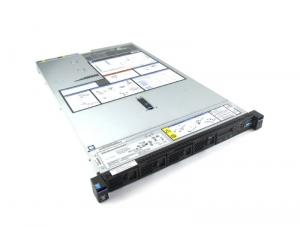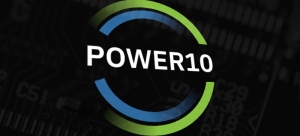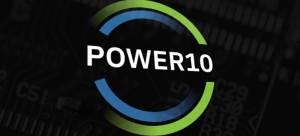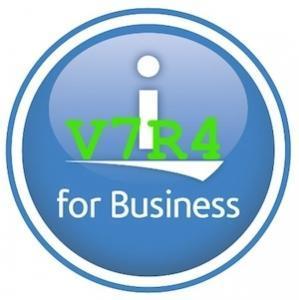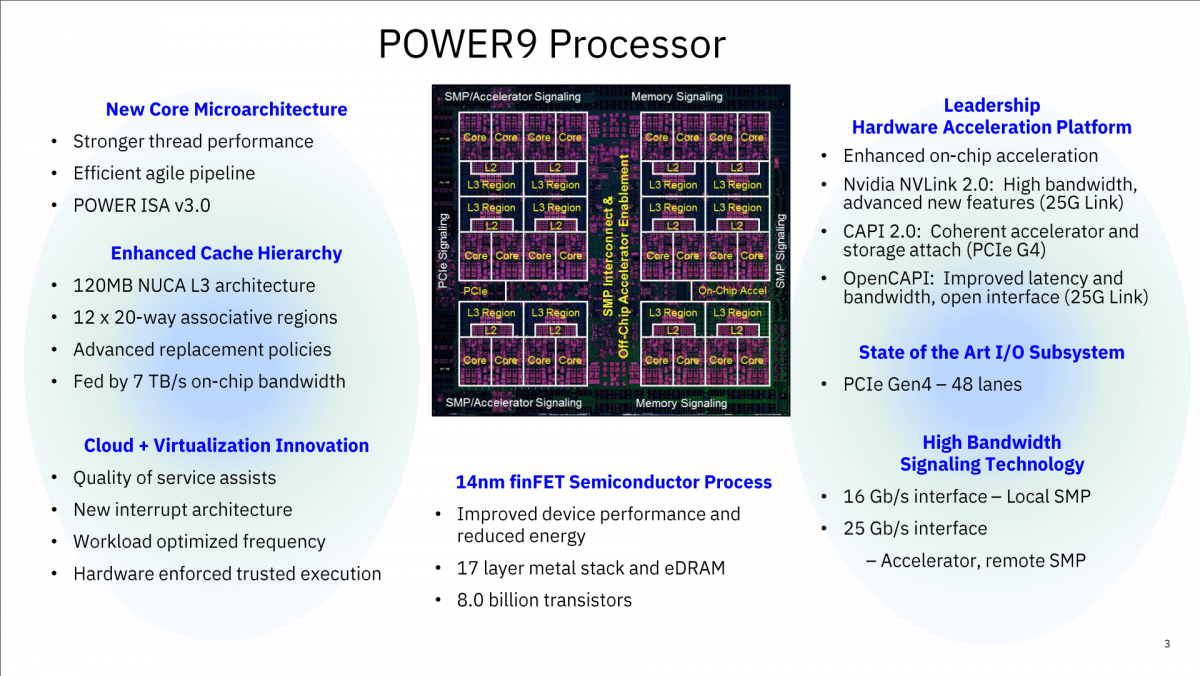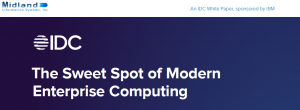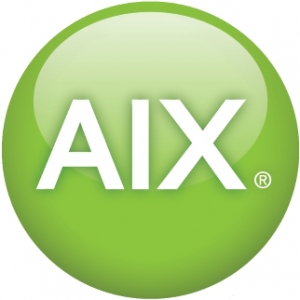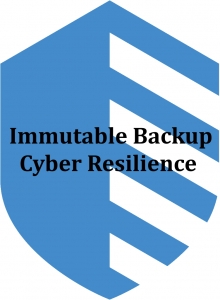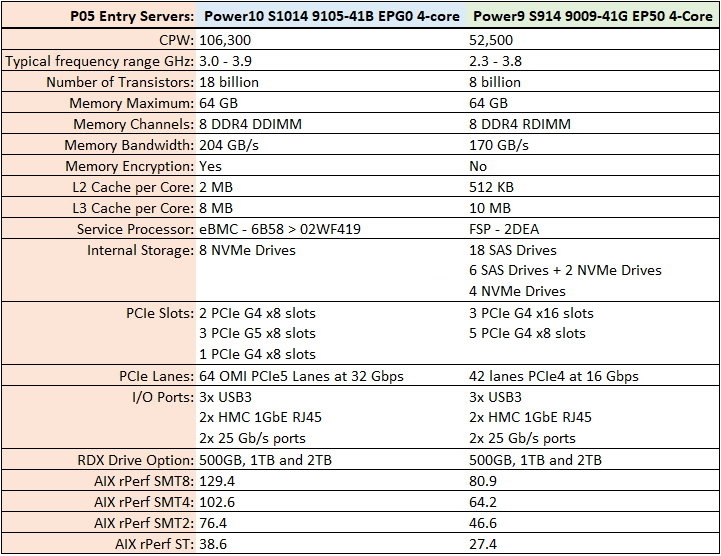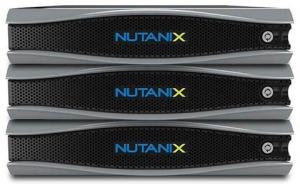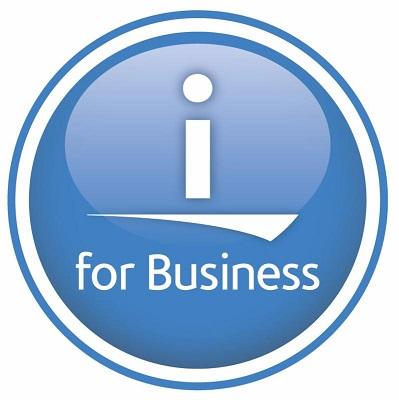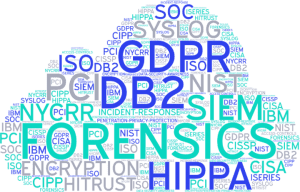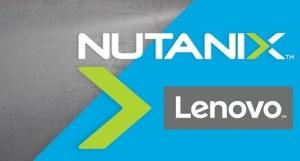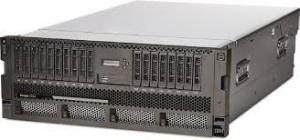The IBM Hardware Management Console (HMC) is a virtual hardware appliance used to manage and monitor IBM i, AIX and Linux server workloads running on Power9, Power8, Power7, Power6 and Power5 Systems. The IBM HMC uses built in terminal emulation software to connect and control Power system resources, services, virtualization features and order Capacity Upgrade on Demand. The IBM HMC can consolidate the monitoring and management of all Power systems in a company’s infrastructure that is supported by the HCM code. Every HCM model supports different Power system models based on the version of HMC code. For instance, the latest HCM...
Upgrading your IT infrastructure doesn’t have to be a headache. At Midland, we’re here to take the stress out of the process and ensure you get the right solution for your business. Whether you're considering an IBM Power10 upgrade to boost performance and scalability or simply looking to maximize your investment, we make it straightforward, efficient, and hassle-free. With our expert guidance and the right preparation, your first call with Midland can set the stage for a smooth upgrade experience. Here’s everything you need to know to get started—and how we’ll help make the process seamless every step of...
The ability to adapt to changing technology needs isn’t a luxury—it’s a necessity. Enterprises are increasingly embracing hybrid environments, combining the utilization of on-premises infrastructure, private cloud, and public cloud services, with orchestration between these platforms. Unlike a fully cloud-native model, hybrid environments offer businesses the best of both worlds: the security and control of on-premises systems and the agility and scalability of cloud computing. Disaster Recovery Made SimpleOne of the standout benefits of hybrid environments is improved disaster recovery. In a traditional on-premises setup, a hardware failure or local disaster could bring business operations to a halt. With a...
IBM i V7R4 (7.4) OS400 enhancements and additions improve Power9 and Power8 system and DB2 database performance, security and availability. Details of OS400 V7R4 features and specifications for IBM i Power Systems are explained below in detail, and arranged by the following topics: Security, System Management, Networking, Availability, Application development, Miscellaneous features. IBM i V7R4 (7.1) release date is June 21, 2019. OS400 V7R4 is supported on IBM Power9 and Power8 processor systems, and is not supported on earlier IBM Power system processor generations. All IBM i customers should read the IBM 7.4 memo before upgrading to ensure compatibility and verify if discontinued...
IBM Power8 End of Life EOL a.k.a End of Support Service EOS IBM Power8 Servers are being withdrawn from service for IBM Maintenance and Support, and will also discontinue leases and rentals. As of July 17, 2023, standard IBM Hardware Maintenance HWMA for IBM Power8 models can no longer be purchased. ✅ Midland however will continue to sell used and refurbished IBM Power8 Servers, parts and related extended maintenance and support service agreements to customers. All used and refurbished IBM i and IBM AIX Power hardware sold by Midland includes warranty and support, and optional extended maintenance and support agreements can...
🔊 Summary read by AI Larry IBM Server upgrades – always a tough call. Should you invest in a new POWER server if your workloads are running just fine on an earlier model? Perhaps, as the new POWER9 servers received a major performance boost thanks to improved hardware, memory, and enhanced on-chip acceleration. In this post, we’ll show exactly how POWER9 compares to POWER8 in terms of memory, CPU, TCO and overall performance. Let’s dive in! POWER8 vs POWER9: Tech Specifications and Main Improvements POWER9 with comes loads of new hardware. Some are enterprise-grade, other are more focused on small to mid-range...
IBM Power9 Systems and features below are only available in refurbished or used condition, and are no longer sold in new condition by IBM as specified by below dates. The IBM Power9 withdrawn systems and features from marketing are listed below, but can still be placed under an IBM Hardware Maintenance HWMA at standard rates. The below list of IBM Power9 systems and features do not have an end of life, end of service or end of support date specified by IBM. Midland will continue to sell IBM Power9 Server models, features, and parts in used and refurbished condition. All used and...
Becoming a digital enterprise is necessary, but that doesn't make it easy. It's even harder when you don't have the right tools for the job. For any enterprise-class compute platform to be able to function as the engine of the digital enterprise, it needs to meet some strict criteria. Research company IDC (International Data Corporation) tested the new IBM Power10 processor and E1080 platform to see how they checked the boxes on the following critical considerations: Security as an Imperative Requirement The Reliability mandateScalability and sustainabilityThe right hybrid IT infrastructureThe importance of AI and where to run it We're happy to...
IBM AIX Power systems are enterprise-class open standards-based Unix servers that support critical applications and database workloads having high I/O and memory requirements, and require maximum performance, availability, security and scalability. IBM’s AIX Power systems have been the most popular Unix server line in the world for over a decade for a number of compounding reasons. As a whole, IBM’s AIX Power server platform has countless industry leading benchmarks and application specific achievements that attrct businesses for specific uses cases, but after factoring in software license costs, the total cost of ownership numbers makes the IBM Power platform the obvious choice....
Immutable backup technology is crtical component for Cyber Resiliency and Disaster Recovery for organizations of any size. Cyber resilience is a measure of an organization’s ability to protect data and continue business operations despite a successful cyberattack involving data that is either corrupted or destroyed, such as from a malware or ransomware attack. The measure of cyber resiliency is based on amount of data loss and recovery time required to resume normal business operations. If you were to conduct a cyber resiliency analysis of your environment based on NIST CSF, it would assesses and score your organization’s readiness to sustain and...
The IBM S1014 9105-41B EPG0 4-core Processor is the most popular Power10 model for AS400 workloads, which is not surprising considering the amount of CPW IBM added for the new entry P05 software tier system. The IBM i S1014 9105-41B EPG0 4-core processor has a whopping 106,300 CPW, and that is a lot of power for the SMB market to take advantage of. IBM more than doubled the CPW for the new Power10 S1014 4-core IBM i entry model, which is an astonishing increase in comparison to the previous fastest P05 Power9 processor system, the IBM S914 9009-41G EP50 4-Core that...
What's the difference between the new IBM S914 9009-41G and 9009-41A Power9 models? The only difference is the newer 9009-41G S914 model was built entirely with fourth generation PCIe technology, capable of delivering much better I/O performance, bandwidth and faster data transfers. The number of Gen4 PCIe slots vary based on the Power9 configuration, but the 9009-41G supports up to fourteen PCIe4 devices, eleven 6.4 TB Non-Volatile Memory express (NVMe) Solid State Drives for a total of 70.4 TB of usable NVMe SSD storage for an IBM i, AIX, Linux server or VIOS partition. Performance gains of a IBM S914 9009-41G compared to...
IBM Power9 Servers may be the best Linux server to run your applications. IBM Power Linux servers have a proven history of delivering over twice the performance per core compared to industry leading x86 server brands. IBM Power Linux servers have also proven to deliver the lowest cost of ownership compared to other Linux servers running on x86 hardware. Although there is no one single answer to this question, the two statements address what most people want to know when comparing Linux server workloads, such as: application server, database server, cloud server, SAP server, analytics server, business intelligence server, web...
How to increase IBM POWER System application performance running on IBM i, AIX and Linux Server with SSDs (Solid State Drives) Every IBM POWER System application performs significantly faster running on SSD (microsecond and nanosecond response times, compared to millisecond and seconds). Application performance on IBM POWER Systems experiencing slow query responses times, have intensive I/O requirements or are experiencing latency as a result of accessing data on hard disk drives, can improve performance using various database and query approaches. However, the most effective and usually quickest approach is to replace traditional HHDs with IBM Solid State Drives (SSD) using either Enterprise or...
Most SIEM environments rely on a plethora of different servers, storage arrays, hypervisors and network interconnects to support their rapidly growing SOC environments. Likewise, most SIEMs also all have the same issues and concerns about performance, costs and time required to provision and manage storage growth. The primary problem is, the entire infrastructure the SIEM relies on is not integrated or even truly virtualized under a single unified architecture. As a result, administrators are stuck in a never ending battle of upgrading and adding more traditional technology for the same problems, and security analysts are constantly waiting for searches to complete...
From its inception in the 1980s, the IBM AS400 and OS400 operating system has had many iterations and transformations over the years, but it has consistently maintained the distinguished honor of delivering businesses the lowest TCO midrange computing system in the industry. To this day, tens of thousands of businesses, including the largest companies in the world rely on the IBM i to run their most critical applications. There is no single reason, but collectively, the entire IBM i package of hardware, operating system, integrated database and all the features they encompass and provide businesses, is what contributes to the extremely...
It has only been a year, and the new data protection and privacy regulations have already hit a few companies with multi-million dollar fines. Every company with sensitive data on an IBM i (iSeries AS400) and has data protection and privacy requirements, should have implemented DB2 encryption already. Some of the companies seen in the news recently not only failed to secure personal data properly, could not accurately assess how much data was compromised, had a lax incident response plan and were slow to notify authorities. These factors all led to heavier fines, causing the total financial penalties to exceed 100s...
Configuring the IBM i to forward security and system event logs to QRadar SIEM can be done a few different ways, but in order to do it correctly; in LEEF format, in real-time, with GID and enriched event log information, you need an IBM i event log forwarding tool designed for the QRadar SIEM. There are IBM i security event log forwarding tools that can be used for QRadar that will send event logs in real-time and in CEF SYSLOG format, and even a couple that support LEEF, but only one includes QRadar QID for mapping, log enrichment and is on...
A hyper converged infrastructure (HCI) uses software to virtualize all server and storage resources for streamlining, automating and maximizing IT resources and operations for a variety of complex, compute-intensive Databases, VDI, Microsoft, Business Applications, Cloud, Big Data, SIEM, SYSLOG and other x86 environments. HCI virtualization solutions significantly reduce operating and licensing costs, provide predictable performance, provide up to 2.8 times storage gains and enables long-term flexibility and scalability. The HCI software defined infrastructure model addresses almost every IT challenge facing companies today, including:Improving IT staff productivityImproving operational efficiencyReducing capital expensesReducing operating expensesImproving backup/recoveryImproving resource utilizationData center consolidationThe value of hyper converged infrastructure...
This specification breakdown of the IBM Power9 9009-42A model S924 will explain the key performance features that sets it apart from its Power8 predecessor. In comparison to the 8286-42A model S824, the IBM Power9 S924 delivers 40-50% better performance for data intensive database and analytics workloads, with over twice the memory footprint (accelerated by Coherent Accelerator Processor Interface CAPI) running at speeds up to 344 GB/s (172 GB/s per socket), has over 60-70% more CPW for IBM i workloads and 2X the I/O bandwidth (Gen4 PCIe slots). IBM Power9 with CAPI 2.0 increased I/O bandwidth over 4X Power8 ability, clocked at 192...

